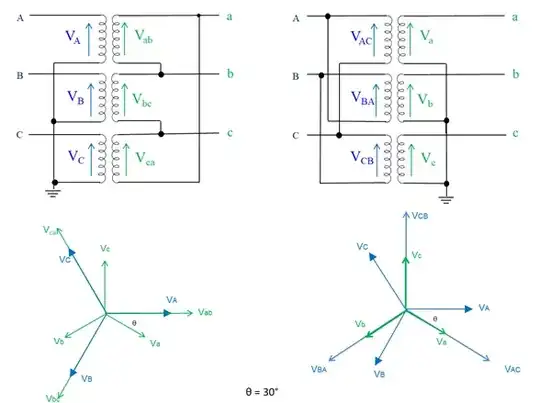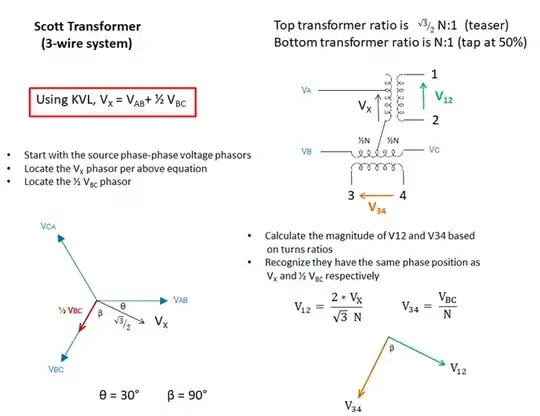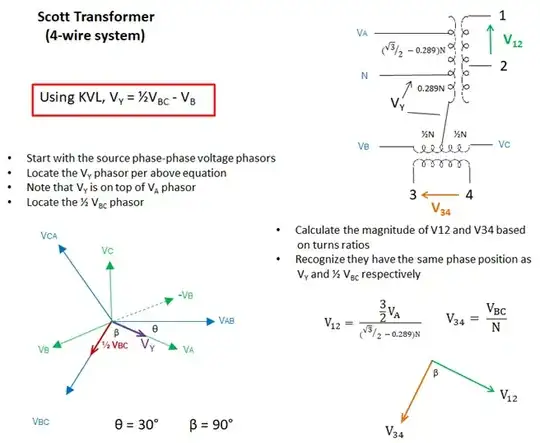something like wye-delta and delta-wye connection.
we can originally know wye-delta connection is step-down transformer and second side voltage phase is being to -30 degree. And also delta-wye connection is step-up transformer and second side voltage phase is being to +30 degree.
But the other side, we also can make wye-delta connection is step-up transformer if it get turn ratio like 1:2. So in this case maybe will be become +30 degree in second side voltage.
apply this principle in scott connection, how can work it?
case1) turn ration 1:2 - step up second side voltage's angle +90 degree?
case2) turn ration 2:1 - step down second side voltage's angle -90 degree?
if you have any information or homepage link, can you leave it for me?
thank you so much.


